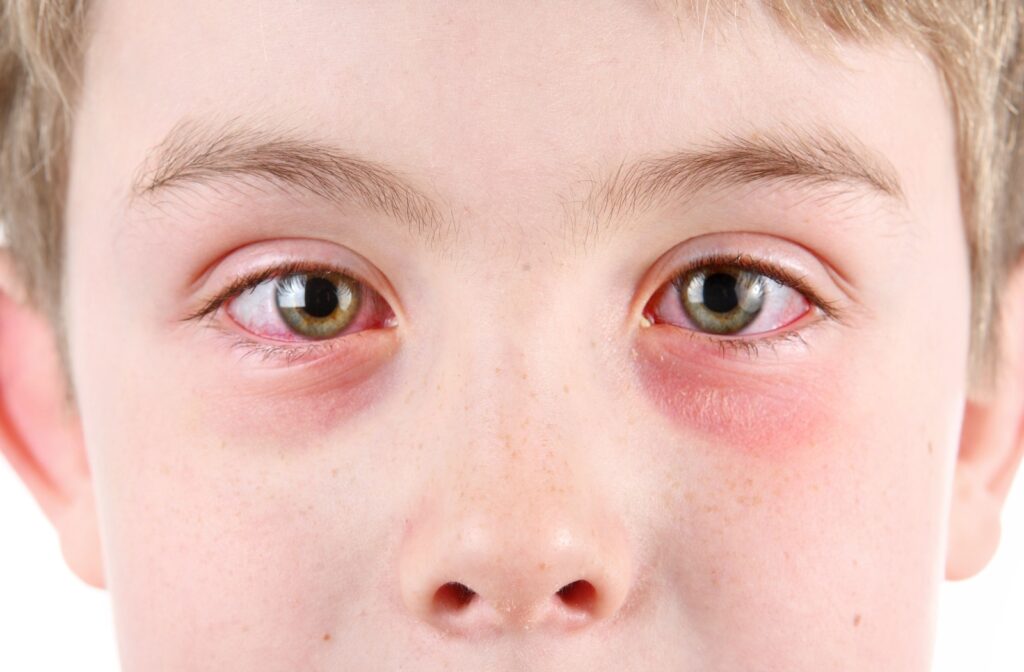What Is Commonly Misdiagnosed as Pink Eye?
Introduction
Pink eye, also known as conjunctivitis, is a common eye condition that affects millions of people each year. It is characterized by redness, irritation, and discharge in the eye. While pink eye is a well-known condition, it is often misdiagnosed, as several other eye problems can present similar symptoms. This comprehensive article will explore the various eye conditions that are commonly mistaken for pink eye, the importance of accurate diagnosis, and provide a detailed FAQ section to address common questions and concerns.
Understanding Pink Eye
Pink eye, or conjunctivitis, is an inflammation of the conjunctiva, the thin, transparent membrane that covers the white part of the eye and the inner eyelid. This inflammation can be caused by a variety of factors, including viral or bacterial infections, allergies, or irritants.The primary symptoms of pink eye include:
- Redness or pinkness in the white of the eye
- Itching, burning, or a gritty feeling in the eye
- Excessive tearing or discharge from the eye
- Crusting of the eyelids, especially in the morning
While pink eye is a common and often mild condition, it is essential to seek medical attention to determine the underlying cause and receive appropriate treatment.
Eye Conditions Commonly Misdiagnosed as Pink Eye
Dry Eye Syndrome
Dry eye syndrome is a condition in which the eyes do not produce enough tears or the tears evaporate too quickly, leading to irritation, redness, and a burning or gritty sensation in the eyes. These symptoms can be easily mistaken for pink eye, as both conditions can cause similar eye discomfort.To differentiate between dry eye and pink eye, eye doctors may consider factors such as the duration of symptoms, the presence of discharge, and the individual’s medical history and environmental factors that may contribute to dry eye.
Blepharitis
Blepharitis is an inflammation of the eyelids, often caused by a bacterial or fungal infection or an underlying skin condition. Symptoms of blepharitis include redness, swelling, and crusting of the eyelids, which can resemble the appearance of pink eye.However, blepharitis primarily affects the eyelids, while pink eye primarily affects the conjunctiva. Proper diagnosis and treatment are essential, as blepharitis requires different management strategies compared to pink eye.
Allergic Conjunctivitis
Allergic conjunctivitis is an inflammation of the conjunctiva caused by an allergic reaction to substances such as pollen, dust, or pet dander. The symptoms of allergic conjunctivitis, including redness, itching, and tearing, can be very similar to those of pink eye.The key difference is that allergic conjunctivitis is not contagious, unlike viral or bacterial pink eye. Identifying the underlying allergen and providing appropriate treatment, such as antihistamine eye drops, can help alleviate the symptoms.
Foreign Body Sensation
The feeling of having a foreign object in the eye can cause redness, irritation, and a gritty sensation, which can be mistaken for pink eye. This condition is often caused by a small particle, such as dust or an eyelash, becoming trapped in the eye.Unlike pink eye, the symptoms of a foreign body sensation are typically localized to a specific area of the eye and may not involve excessive tearing or discharge. Proper treatment involves gently flushing the eye with clean water and, if necessary, seeking medical attention to remove the foreign object.
Stye
A stye, also known as a hordeolum, is a painful, red bump that develops on the eyelid, often due to a bacterial infection. Styes can cause swelling, redness, and tearing, which can resemble the symptoms of pink eye.However, styes are typically localized to a specific area of the eyelid, while pink eye affects the entire conjunctiva. Additionally, styes are often accompanied by a noticeable lump or bump on the eyelid, which is not a common feature of pink eye.
Keratitis
Keratitis is an inflammation of the cornea, the clear front part of the eye. This condition can cause redness, pain, sensitivity to light, and a feeling of something being stuck in the eye, all of which can be mistaken for pink eye.The key difference is that keratitis often involves more severe symptoms, such as decreased vision and intense eye pain, which are not typically associated with pink eye. Prompt diagnosis and treatment are crucial, as keratitis can lead to serious complications if left untreated.
Importance of Accurate Diagnosis
Accurately diagnosing the underlying cause of eye irritation is crucial, as the appropriate treatment can vary significantly depending on the condition. Misdiagnosis can lead to:
- Delayed or ineffective treatment: If the condition is not properly identified, the appropriate treatment may not be provided, leading to prolonged discomfort and potential complications.
- Unnecessary use of antibiotics: In the case of viral or allergic conjunctivitis, the use of antibiotics may be ineffective and contribute to the growing problem of antibiotic resistance.
- Spread of contagious conditions: Failing to recognize a contagious form of pink eye can result in the inadvertent spread of the infection to others.
- Potential vision complications: Certain eye conditions, such as keratitis, can lead to vision-threatening complications if not promptly and properly treated.
To ensure accurate diagnosis and appropriate treatment, it is essential to seek the guidance of an eye care professional, such as an optometrist or ophthalmologist, when experiencing any unusual or persistent eye symptoms.
Table of Commonly Misdiagnosed Eye Conditions
| Condition | Key Symptoms | Distinguishing Features |
|---|---|---|
| Dry Eye Syndrome | – Redness – Irritation – Burning or gritty sensation |
– Symptoms often worse with prolonged screen time or in dry environments – Lack of excessive tearing or discharge |
| Blepharitis | – Redness – Swelling – Crusting of the eyelids |
– Primarily affects the eyelids, rather than the conjunctiva – May involve eyelash changes or dandruff-like flakes |
| Allergic Conjunctivitis | – Redness – Itching – Tearing |
– Typically triggered by exposure to allergens – Not contagious, unlike viral or bacterial pink eye |
| Foreign Body Sensation | – Redness – Irritation – Gritty feeling |
– Symptoms localized to a specific area of the eye – Lack of excessive tearing or discharge |
| Stye | – Painful, red bump on the eyelid – Swelling – Tearing |
– Localized to a specific area of the eyelid – Presence of a noticeable lump or bump |
| Keratitis | – Redness – Pain – Sensitivity to light – Decreased vision |
– Involves the cornea, rather than the conjunctiva – Symptoms are typically more severe than pink eye |
For more information on eye conditions and their symptoms, you can refer to the National Eye Institute, a division of the U.S. National Institutes of Health.
Conclusion
Accurately diagnosing the underlying cause of eye irritation is crucial for providing appropriate treatment and preventing potential complications. While pink eye is a common condition, it is often misdiagnosed due to the similarity of symptoms with other eye problems. By understanding the key differences between pink eye and conditions like dry eye, blepharitis, allergic conjunctivitis, and others, individuals can seek the proper medical attention and receive the most effective care for their eye health.
Frequently Asked Questions (FAQs)
- What is the difference between viral and bacterial pink eye?
- Viral pink eye is caused by a virus and typically presents with redness, excessive tearing, and a watery discharge. It is highly contagious and usually starts in one eye before spreading to the other.
- Bacterial pink eye is caused by a bacterial infection and often involves a thick, yellow or green discharge, as well as swelling and crusting of the eyelids. It is also highly contagious and requires antibiotic eye drops for treatment.
- Can allergies be mistaken for pink eye?
- Yes, allergic conjunctivitis can be easily mistaken for pink eye, as both conditions can cause redness, itching, and tearing in the eyes. The key difference is that allergic conjunctivitis is not contagious and is typically triggered by exposure to allergens, such as pollen or pet dander.
- What are the symptoms of dry eye that can be confused with pink eye?
- Dry eye syndrome can cause redness, irritation, and a gritty or burning sensation in the eyes, which are similar to the symptoms of pink eye. However, dry eye is typically not accompanied by excessive tearing or discharge, and the symptoms are often worse in dry or windy environments.
- How can a foreign body in the eye be mistaken for pink eye?
- A foreign object, such as a speck of dust or an eyelash, trapped in the eye can cause redness, irritation, and a gritty feeling, which can resemble the symptoms of pink eye. The key difference is that the symptoms of a foreign body are typically localized to a specific area of the eye, rather than affecting the entire conjunctiva.
- What are the signs that a stye should be differentiated from pink eye?
- A stye, or hordeolum, is a painful, red bump that develops on the eyelid, often due to a bacterial infection. While styes can cause redness, swelling, and tearing, they are typically localized to a specific area of the eyelid, unlike the more widespread redness associated with pink eye.
- How can keratitis be distinguished from pink eye?
- Keratitis, or inflammation of the cornea, can cause redness, pain, sensitivity to light, and a feeling of something being stuck in the eye, similar to pink eye. However, keratitis often involves more severe symptoms, such as decreased vision, that are not typically associated with pink eye. Prompt diagnosis and treatment are crucial, as keratitis can lead to serious complications if left untreated.
- Why is it important to seek professional medical attention for eye conditions?
- Seeking professional medical attention is crucial when experiencing any unusual or persistent eye symptoms, as accurate diagnosis and appropriate treatment are essential. Misdiagnosis can lead to delayed or ineffective treatment, unnecessary use of antibiotics, the spread of contagious conditions, and potential vision complications. An eye care professional, such as an optometrist or ophthalmologist, can provide the proper diagnosis and recommend the most effective course of action.
- How can I prevent the spread of contagious eye conditions like pink eye?
- To prevent the spread of contagious eye conditions, it is important to practice good hygiene, such as frequent handwashing, avoiding touching the eyes, and refraining from sharing personal items like towels or makeup. If you have been diagnosed with a contagious eye condition, it is essential to follow the instructions provided by your eye care professional, which may include using prescribed eye drops, avoiding contact with others, and properly disposing of any contaminated materials.
- What are the long-term consequences of leaving certain eye conditions untreated?
- Leaving certain eye conditions, such as keratitis or severe dry eye, untreated can lead to serious complications, including vision loss, corneal scarring, and increased risk of eye infections. It is crucial to seek prompt medical attention and follow the recommended treatment plan to prevent these potential long-term consequences and maintain overall eye health.
- How can I tell if my eye condition requires immediate medical attention?
- If you experience any of the following symptoms, it is important to seek immediate medical attention:
- Sudden, severe eye pain
- Significant changes in vision, such as blurriness or loss of vision
- Extreme light sensitivity
- Excessive swelling or discharge from the eye
- Any eye injury or foreign object in the eye
These symptoms may indicate a more serious underlying condition that requires prompt diagnosis and treatment to prevent potential complications.
- If you experience any of the following symptoms, it is important to seek immediate medical attention:



